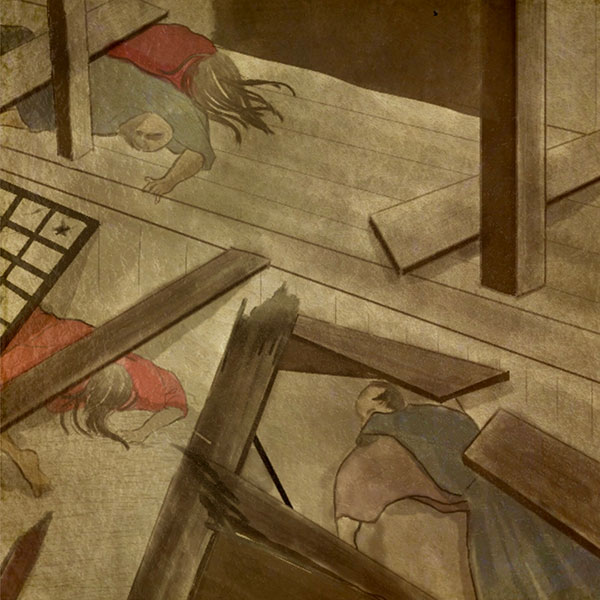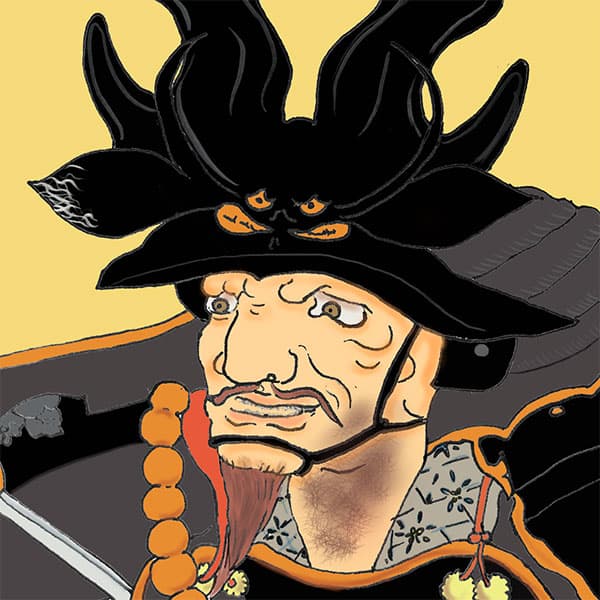- Kuwana DomainRuled by multiple Matsudaira families
- Kuwana Castle continued to exist until the end of the Edo period as the domain castle of the Ise Kuwana clan and as a strategic point along the Tokaido route. The Kuwana clan is ruled by several Matsudaira families other than the Honda family. Here, we will explain the history of the Ise-Kuwana domain. Reign of the Honda family, Kuwana is in the east

Kuwana CastleKuwana City, Mie Prefecture
- TOP
- Kansai
- Mie Prefecture
- Kuwana Castle
| Other name | Ogi Castle, Asahi Castle |
|---|---|
| castle construction | 1601 |
| address | 5-1 Yoshinomaru, Kuwana City, Mie Prefecture |
- Access to Kuwana Castle
- Approximately 15 minutes walk from Kuwana Station on the JR Kansai Main Line.
HISTORYKuwana Castle, a key point on the Tokaido known as a famous castle on the sea
Kuwana Castle is a flat castle that existed in Kuwana City, Mie Prefecture. Since the Warring States period, many military commanders, including Oda Nobunaga, have put effort into acquiring it as a key point connecting Kyoto and the Kanto region. This time, we will look into the history of Kuwana Castle.
- The beginning of Kuwana Castle
- During the Sengoku period, the land of Kuwana was divided into smaller areas and ruled by small feudal lords and local magnates called the 48 Northern Houses. There are three castles in Kuwana: Tojo, Saijo, and Misaki Castle, and it is said that Tojo is the origin of Kuwana Castle, which was built during the Edo period. In 1513, Tojo belonged to a powerful family called Ito Buzaemon, but when Oda Nobunaga conquered Kuwana in 1574, Tojo and other three castles were placed under Nobunaga's control. Kazumasu Takigawa became the lord of the castle and began to rule it. When Toyotomi Hideyoshi took over the country, the lords of the three castles changed one after another in a short period of time, including Naomori Ichiyanagi, Sadakazu Ujiie, and Ienori Matsudaira.
In 1601, Tokugawa Ieyasu, who took control of the country after the death of Toyotomi Hideyoshi, gave 100,000 koku to Honda Tadakatsu, one of the Four Heavenly Kings of Tokugawa, and sealed him in Kuwana. - Kuwana Castle in the Edo period
- Honda Tadakatsu was given the Kuwana land by Tokugawa Ieyasu and began building a castle along the Ibi River. A pier was also constructed so that the castle could be entered directly from the Ibi River, and a four-story, six-story castle tower, 51 turrets, and 46 towers were built. Kuwana is a transportation hub connected to Atsuta in Nagoya by sea. If the feudal lords of the Western countries rebelled and tried to invade Edo, they would not be able to cross Ise Bay without capturing Kuwana Castle. Therefore, as a castle built after the Battle of Sekigahara as a strategic point along the Tokaido, Kuwana was built to be fully prepared for actual combat.
Kuwana Castle was built near the mouth of the Ibi River so that it juts out into the river, and because it looks like it is floating on the sea, it became a famous spot on the Tokaido road as a ``famous castle on the sea.'' There is also an anecdote that Honda Tadatsuki, the grandson of Honda Tadakatsu, fell in love with Senhime, the wife of Toyotomi Hideyori, who was crossing the seven-ri ford at this castle, and they got married. In addition, Hiroshige Utagawa's ``Kuwana'' from The 53 Stations of the Tokaido depicts Kuwana Castle as seen from the sea, allowing you to imagine what it must have been like at the time.
After Honda Tadamasa, the eldest son of Honda Tadakatsu, was appointed to Harima-Himeji, Sadakatsu Matsudaira, the half-brother of Tokugawa Ieyasu, entered Kuwana Castle as the new lord. In 1701, a fire occurred that destroyed most of the castle town of Kuwana, and at this time the castle tower of Kuwana Castle was also destroyed, and Go was never rebuilt.
The Matsudaira clan continued to serve as the lords of Kuwana Castle, but at the end of the Edo period, they consistently sided with the former shogunate army, and the lords served as Kyoto Shoshidai and other positions. For this reason, after the former shogunate army was defeated in the Battle of Toba-Fushimi in 1868 after the restoration of imperial rule, the castle was surrounded by Meiji government forces and they chose a bloodless surrender of the castle. At this time, the Meiji government burned down the Tatsumi Tower, the symbol of Kuwana Castle, as a sign of surrender. - Kuwana Castle after the Meiji period
- Kuwana Castle, which lost its Tatsumi turret, was gradually demolished after the abolition of feudal domains and the establishment of prefectures in 1888. There are many castles across Japan that were abandoned during this period and lost their main buildings, but Kuwana Castle's stone walls were also demolished to make way for the Yokkaichi Port embankment. As a result, the stone walls that remain at many castle ruins do not exist at the Kuwana Castle ruins.
In 1928, the Honmaru and Ninomaru areas were developed and became Kyuka Park. In 1942, it was designated as a historic site in Mie Prefecture. Additionally, when the Ministry of Land, Infrastructure, Transport and Tourism Water Gate Integrated Management Center was built in 2003, Banryu Yagura was rebuilt. In addition, the "Squirting Embankment" at Yokkaichi Port, which used the stone walls of Kuwana Castle, has been designated as a national important cultural property.
The current Kuwana Castle ruins include a statue of Honda Tadakatsu, Chinkoku Shukoku Shrine, which enshrines Sadatsuna Matsudaira, and the main gate of Shōonji Temple. In addition, seasonal flowers such as cherry blossoms and irises are planted, making it a place of relaxation for Kuwana citizens.
Read about incidents related to Kuwana Castle
- Tensho EarthquakeThe great disaster that caused Hideyoshi to give up on subjugating Ieyasu
- In Japan, an earthquake-prone country, large earthquakes have disrupted people's destinies since ancient times. One such earthquake was the Tensho Earthquake, which hit the center of Japan on November 29, 1586 (January 18, 1586). Hide Toyotomi was struck by a huge earthquake with a magnitude of 8.

Read about people related to Kuwana Castle
- Tadakatsu HondaA military commander who has both flowers and fruits and is highly rated by everyone.
- Long ago, samurai ran around Japan. The last time the samurai were active was the Edo period, which lasted for 250 years. Tokugawa Ieyasu established the Edo Shogunate. Tokugawa Ieyasu had a life of hardships from an early age, but in the end he became a ruler of Japan.

History of the Ise Kuwana Domain, whose domain office is Kuwana Castle
| Domain office | Kuwana Castle |
|---|---|
| old area | Kuwana, Ise Province |
| stone height | 113,000 koku |
| Fudai/Tozama | Fudai |
| main lord | Mr. Honda, Mr. Matsudaira |
| Estimated population | 65,000 people (first year of the Meiji era) |
Honda Tadakatsu, said to be one of the Four Heavenly Kings of Tokugawa, established a feudal domain. The second generation Honda Tadamasa was transferred to Kamihimeji in Kasou due to his achievements in the Osaka Summer Campaign. Sadakatsu Matsudaira, a half-brother of Tokugawa Ieyasu, joined the club, and the Matsudaira family later joined the club. Sadataka Matsudaira at the end of the Edo period was Katamori Matsudaira's younger brother.





















